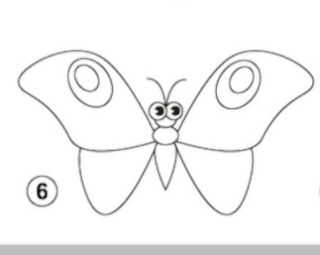What do we learn from drawings of children?
Kids enjoy drawing. They experience the sheer joy of making
marks at about the age of two. Some crayon, pencil or ink are picked up and
they scribble.
With these scribbles, our
toddlers are not trying to represent truth. It is simply a joyful discovery of
the opportunity to make a lasting mark on the planet - their own new found
strength.
The meaning of scribbling
The earlier straight-line scribbles
become circular scribbles at around three or four years of age, and this is a
very significant milestone. To build enclosed circle shapes, their broad,
continuous, circular scribbled lines begin to link together.
The ability to draw an
enclosed form marks the start of being able to depict the things around you in
the universe. The beginning of being able to shape the letters of the alphabet
is also marked.
Significance Making
Gradually, as adults
throughout their lives look for messages in their marks, the scribbles move
from simply becoming an inner visceral gratification for young children.
Circular forms, or the light, or
trees, become heads. "Moms, dads, grandparents, careers give their
scribbles meaning, "Is that mummy? "What a lovely tree!”
Their scribbles have now
become identifiable as "things" to others through the encouraging
discussions and modeling of adults. This is also an introduction to the nuanced
and abstract notion that symbols of meaning are also written words.
Our kids are starting to realize the
communicative power of making their mark.
The capacity to recognize a
"inside" and a "outside" of those shapes is the next
significant development. Dots become eyes and noses on the inside, lines shoot
from the outside to become arms, legs, rays of the light, petals and stems. To
refine their alphabet letter writing, these same abilities are needed.
The adults in their lives are
delighted and those optimistic responses provide great encouragement to our
children. Their sketches are celebrated, put up on childcare walls, popped on
to fridge doors. And in this way, they draw and draw.
From the viewpoint of a
four-year-old - what is not to like about drawing? It gives them tremendous
inherent happiness, and it also seems to make their loved ones happy.
Excluding, obviously, when he's on the wall of the bedroom... in biro...
Not all of the rainbows and roses
are
A look around the country at
refrigerator doors and you might be forgiven for assuming that scribbles are
becoming an obsession with roses, suns, rainbows and pointy roofed buildings.
They seem fixated on five-and six-year-olds.
These are all very easy shapes to
draw, it turns out, and they represent schemes that are quite easily
recognizable, ensuring you get a lot of kudos and praise from your audience. Easy Landscape Drawing them provides a lot of external appreciation and internal satisfaction.
But a closer look at five-,
six- and seven-year-olds' drawings will show far more than sunshine, lollipops
and rainbows. In their paintings, the proportion of the objects has nothing to
do with real life.
On the page, items which make an
impression on them loom big. Hence, in young children's sketches of themselves,
belly buttons and eyelashes also appear prominently.
On a more sobering note, in
the sketches of children in detention facilities, walls and barbed wire feature
prominently.
When children begin to anchor their
drawings on the paper, where their items had previously drifted randomly in
space, another drawing milestone is achieved by around age seven.
They draw baselines and skylines, generally
thin lines of green grass and blue sky, seeing the world around them as they
attempt to represent it.
Source: The Soft Roots



Comments
Post a Comment